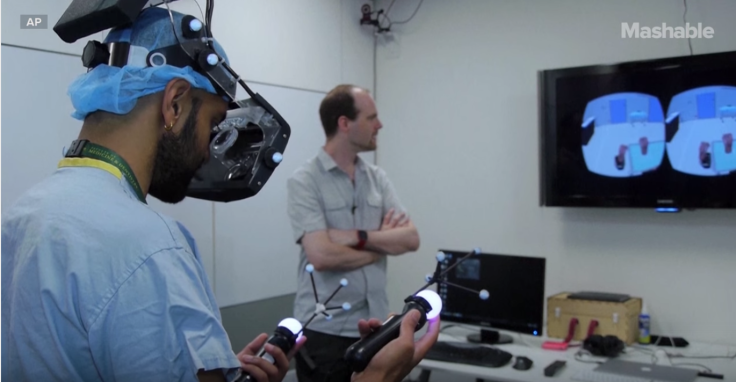Medical School And Beyond: Surgery Simulation Becomes Intensely Real Using This Virtual Reality Program

When people think of virtual reality (VR), they probably think of a world like those in The Matrix or in video game headsets like Oculus Rift or Microsoft’s HoloLens. Though the rise of VR in the entertainment realm is something to definitely keep an eye on, the use of VR in practical settings, like hospitals and classrooms, show just how powerful this new technology can be.
Teaching surgeons how to perform surgery using textbooks, shadowing of other doctors, and cadavers can only go so far. To get them out in the public, doing complex surgical operations with only limited experience is more than likely a bad idea. Now, thanks to VR, surgeons can perform surgeries with no real-world complications, and can get valuable hands-on experience.
“I wanted to set out to save a person’s life through technological innovation,” Aaron Hilton, executive chairman of Conquer Mobile, the company behind the VR program said in the video above. “Real surgeons come in and try it out, and say, ‘I get this! This is really useful.’”
The program puts surgeons into a virtual operating room, allowing them to operate on a virtual patient in real time. Dr. Keerit Tauh said that the depth perception and the use of his hands felt very realistic. Since the VR program runs in real time, surgeons will be able to see exactly where they’re cutting, how far along their sutures go, and the reaction of the area of operation to their cuts.
Dr. James Bond, chairman of thoracic surgery at Surrey Memorial Hospital, said, “At some point in near future, we can take the simulated environment and make it a case-specific environment. If you have somebody with a particularly challenging disease or surgery coming up, the surgeon themselves could actually run through it [the surgery beforehand]. The surgeon would actually have the option to practice the surgery before they actually do the surgery.”
Published by Medicaldaily.com



























